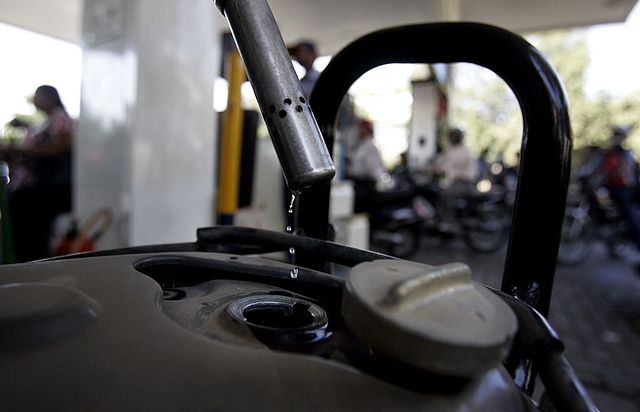
Fuel Fury: Modi Government’s Mistake Was In Not Creating An Oil Price Stabilisation Fund
Ideally, the oil price stabilisation fund should have been started in 2014 and surpluses allowed to accumulate, but even today it is not too late.
If there is one mistake the Narendra Modi government made in managing taxes on petro-fuels – especially diesel – it is that it failed to create a buffer to absorb sudden spikes in imported crude oil prices. Instead, it absorbed the higher revenues from rising petro-taxes into the budget math, leaving little scope for smoothening out the price kinks.
Ideally, Finance Minister Arun Jaitley should have created a reserve account in late 2014, where 75 per cent of the new taxes went to finance budget expenses and banking the balance in an oil price stabilisation account whose accumulations could now have been used to cut prices or moderate increases. Instead, it is faced with two bad options: either asking the oil marketing companies to absorb some of the price increases, or to cut taxes. In the former case, the profits and market valuations of the marketing companies would take a dive; in the latter case, the fiscal deficit takes a toss. Every Re 1 cut in petrol and diesel taxes costs the exchequer Rs 13,000-14,000 crore in revenues.
The promise to try and bring petro-fuels under goods and services tax (GST) is a red herring, for it ain’t gonna happen. The states are simply making too much from petroleum taxes to want to give up this source of revenue freedom. In 2016-17, states earned more than Rs 300,000 crore from such taxes, including their share of central revenues from excise. Even if oil comes under GST, its rate would be so high in order to retain revenue-neutrality (probably 80-100 per cent) that it is not worth the effort. It would distort the GST rate structure even more than it is now.
It is, of course, possible for both Centre and states to make coordinated cuts in taxes, but beyond one-time giveaways, this is not of much use. It will get done a few months ahead of state or general elections, but if oil prices zoom to $90-100, the benefits will be transient.
The opposition parties are raising a stink over the fact that petrol and diesel prices today are even higher than what they were in mid-14, when Brent crude prices were much higher than today (around $110 against $80). Actually, this is an optical illusion, even granted that taxes are much higher today than they were in 2014.
The reason is simple: take diesel prices in Delhi. In mid-2014, diesel was being sold at Rs 52-53 in the national capital, while the price today is Rs 68-and-odd. This is a rise of around 28 per cent over the last four years. But inflation is also much higher. Retail inflation as measured by the consumer price index (CPI) is around 24-25 per cent higher: the CPI index number is at 139 (April 2018) against an average of 112 in 2013-14. Adjusted for inflation, diesel prices at the pump are almost the same in real terms – maybe marginally higher. So, despite higher fuel taxes, there is no mangling of the consumer’s wallet here.
But, of course, consumers don’t accept the concept of real prices as opposed to absolute prices.
Politically, thus, governments must be able to moderate prices at all times, and the only way to do it is to create an oil price stabilisation fund. If, for example, we want to keep prices at the level where Brent crude is at $70 a barrel, whenever prices fall below $70, the retail prices should be held stable and higher margins paid into the fund. If prices rise, the fund can be used to moderate the rate of increase for a while.
Ideally, the fund should have been started in 2014 and surpluses allowed to accumulate, but even today it is not too late. While crude prices may well rise higher than $80, the fund could start with a deficit and then recoup losses when prices fall eventually. At some point, surpluses will indeed accumulate.